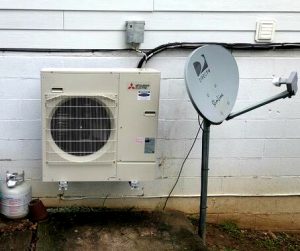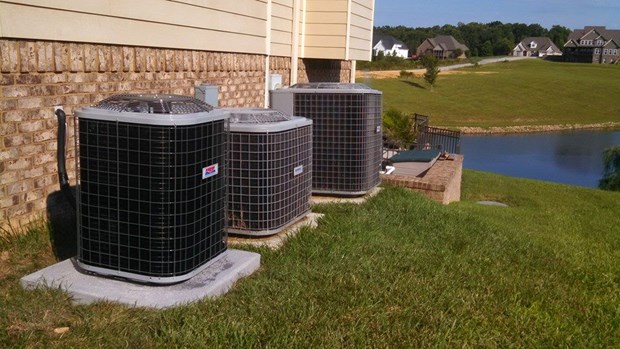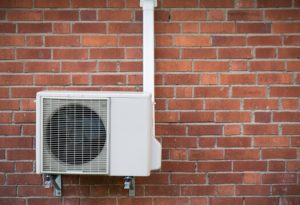A number of relatively new innovations are improving the performance of heat pumps.
Unlike standard compressors that can only operate at full capacity, two-speed compressors allow heat pumps to operate close to the heating or cooling capacity that is needed at any particular moment. This saves large amounts of electrical energy and reduces compressor wear. Two-speed heat pumps also work well with zone control systems. Zone control systems, often found in larger homes, use automatic dampers to allow the heat pump to keep different rooms at different temperatures.
Some models of heat pumps are equipped with variable-speed or dual-speed motors on their indoor fans (blowers), outdoor fans, or both. The variable-speed controls for these fans attempt to keep the air moving at a comfortable velocity, minimizing cool drafts and maximizing electrical savings. It also minimizes the noise from the blower running at full speed.
Many high-efficiency heat pumps are equipped with a desuperheater, which recovers waste heat from the heat pump’s cooling mode and uses it to heat water. A desuperheater-equipped heat pump can heat water 2 to 3 times more efficiently than an ordinary electric water heater.

Another advance in heat pump technology is the scroll compressor, which consists of two spiral-shaped scrolls. One remains stationary, while the other orbits around it, compressing the refrigerant by forcing it into increasingly smaller areas. Compared to the typical piston compressors, scroll compressors have a longer operating life and are quieter. According to some reports, heat pumps with scroll compressors provide 10°–15°F (5.6°–8.3°C) warmer air when in the heating mode, compared to existing heat pumps with piston compressors.
Although most heat pumps use electric resistance heaters as a backup for cold weather, heat pumps can also be equipped with burners to supplement the heat pump. Back-up burners help solve the problem of the heat pump delivering relatively cool air during cold weather and reduces its use of electricity. Since there are few heat pump manufacturers that incorporate both types of heat supply in one box, these configurations are often two smaller, side-by-side, standard systems sharing the same duct-work. The combustion fuel half of the system could be propane, natural gas, oil, or even coal and wood.
In comparison with a combustion fuel-fired furnace or standard heat pump alone, this type of system is also economical. Actual energy savings depend on the relative costs of the combustion fuel relative to electricity.




